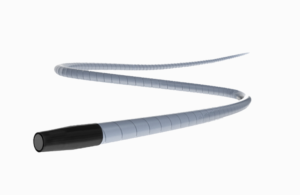
XO Cross Microcatheter is designed for guidewire support, exchange and contrast media injection in the peripheral vasculature.
Microcatheters are small 0.70-1.30mm diameter catheters that are used for guidewire support, exchanges, to access distal anatomy, cross lesions, deliver therapeutic embolic, inject contrast media and perform other procedures in complex endovascular procedures.
“We use multiple microcatheters every day,” interventional cardiologist George Adams said in a news release. “Improving access to distal vasculature is important. We are performing more radial procedures too and need long, responsive, and fatigue-resistant microcatheter technology.”
Transit Scientific’s XO Cross Microcatheter platform delivers new levels of pushability, traceability, flexibility and torque response to access challenging lesions, according to the company. It is made of non-tapered metal-alloy and polymer construction to help deliver high fatigue resistance in tough calcium and plaque that is associated with late-stage peripheral artery disease and critical limb ischemia.
“Tapered catheter designs with larger proximal shafts make it impossible to use as co-axial or tri-axial systems,” interventional cardiologist Richard Saxon said. “The XO Cross non-tapered design should dramatically reduce that problem and help us achieve success more quickly, even in the most difficult cases.”
Transit Scientific plans to launch the 2Fr XO Cross 14 Microcath, 2.6Fr XO Cross 18 Microcath and the 3.8Fr XO Cross 35 Support Catheter for use with standard 0.014″, 0.018″, and 0.035″ guidewires in 90cm, 135cm, 150cm and 175cm working lengths.
“XO Cross represents next-generation microcath technology,” president Greg Method said. “The platform delivers new levels of performance against every metric. The unique non-tapered exoskeletal design allows for coaxial dual-support and is intended to expand on, and enable, new techniques for treating complex PAD and CLI cases. This FDA clearance will position Transit to launch its first wave of XO Cross devices in the USA.”
